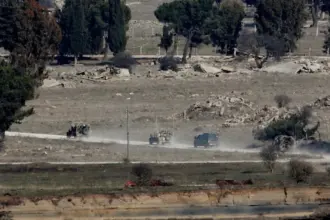The Egyptian art scene is going strong, with Cairo carving a niche for itself on the global art map. Local artists are busily creating, and international ones are making time to drop by for an exhibit. The amount of successful art work in 2007 is abundant, but what defines this year is the creative navigations away from conventional art forms.The year kicked off with a show by Nermine Hammam at the Townhouse Gallery using the palimpsest technique of 16th century artist Michelangelo Merisi da Caravaggio (the father of Baroque art) to tackle the risqué topic of exorcism in Cairo’s Coptic churches.This show stands out for its risqué topic, but more impressively it is remembered because of the way Hammam took real photographs and digitally altered them giving them so much texture, it almost seems as if she painted them herself. Each work looks like an old renaissance painting.In May, Karim Francis curated another memorable exhibit titled “Occidentalism which opened in Hotel Suisse before going on a international tour. Nineteen artists attempted to answer the question “How do you see the West? to counter Orientalist portrayals of the East. Some works depicted military might and hegemony using various techniques and mediums. Artists like Mohammed Abla steered away from mockery and focused more on cultural exchange. In his “Man in War piece, he paints World War II postcards of American soldiers leaving their proud parents and kissing their girls goodbye. Between the works, he plays a small video of Hiroshima, in a show of sympathetic with these soldiers who lose their lives to political conflicts. Another highlight was Huda Lutfi’s painting of enlarged feminized shisha tongs facing each other and bound by a common chain. The Eastern woman with Pharaonic eyes faces the sexualized Western one who is tall and has straight hair. The mirrored wall behind them is cracked, reflecting the opposite wall lettered with a mantra, “I am not who you think I am She is not who you think she is. Lutfi explains that all women, cultures, and races are subjected to such simplifications and expectations and that her depiction shows what unites East and West rather than what separates them.The American University in Cairo’s Falaki Gallery has had a whirlwind year under the new direction of Brian Curling. With its off the wall appeal, an unconventional interactive exhibit titled “Return to Balance and Bounce is worth a mention. An opaque high wall divided one room of the gallery, where on both sides people were engaged in a bizarre sort of volleyball match, bouncing around colorful beach balls over the wall, but they cannot see what’s happening on the other side.The key attraction, however, was a large computer screen featuring a computer game called OK Donuts. The game is played by standing on an 18-inch square platform, and shifting your weight to tilt a virtual platform on the screen. If you bounce the falling balls off the platform into colored hoops, you win. The pseudo-volleyball and computer games appear unconnected at first, until you realize that the balls being thrown over the wall in one room are detected by a censor and are the same balls in the virtual game. If the players in the first room throw many balls at once, it will be harder for the player in the other room to get them all in the hoops. The game was put together by Gregory Niemeyer, assistant professor of new media at UC Berkeley along with two of his students Joe McKay and Nik Hanselmann.Moving from virtual and indoor spaces to the great outdoors, in November artists addressed how Egyptians use the streets as a public domain through a special contemporary art project called “Tales Around the Pavements staged in Downtown Cairo.Curators Aleya Hamza and Edit Molnar concluded that the lack of public spaces is an issue citizens face every day but that people use “guerilla tactics to eke out their own special spaces on the steets of Cairo. The project was created is under the umbrella of an inter-nation program called “Meeting Point 5 – a multi-disciplinary contemporary arts festival organized by the Young Arab Theater Fund.Artist Malak Helmy, for example, created an art space inside an abandoned koshk (kiosk). Titled “How to make your body double overnight at koshk, her work tackled the notion of making one’s wishes come true. Rounding off the year is the Townhouse’s contemporary art auction, the first of its kind, which took place early December. Judging by the turnout, it must have been a huge success. At least 200 tickets were sold ahead of the event and many art aficionados and collectors purchased their LE 100 passes at the door. The money raised from the auctioned pieces went to the gallery’s outreach program, which provides workshops for refugees, street children and communities that would otherwise not have this sort of access to the arts. Proceeds will also help maintain the Townhouse’s theater space and generally keep the gallery up and running.

